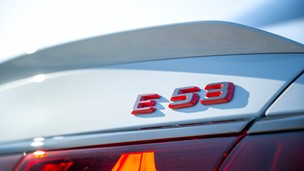Introduction
Toyota is a well-established player when it comes to the world of hybrid cars, being well ahead of the opposition in this respect. And these days you’ll find electrified powertrains in a whole range of Toyotas, from estate cars to superminis and saloons. You’ll also find one in the C-HR crossover, which is the car we’re looking at today.
This funky-looking compact SUV arrived in 2017 as a bold addition to this Japanese firm’s range – bringing distinctive styling, electrification and also enjoyable dynamics, it has proven popular.
Now Toyota has updated the model, and as part of this it’s reverted to purely hybrid powertrains – with a previous 1.2-litre petrol being axed, and a new 2.0-litre setup joining the range. Visual changes are pretty light, though a new touchscreen has been introduced, which boasts both Apple CarPlay and Android Auto. But has it improved the C-HR further?
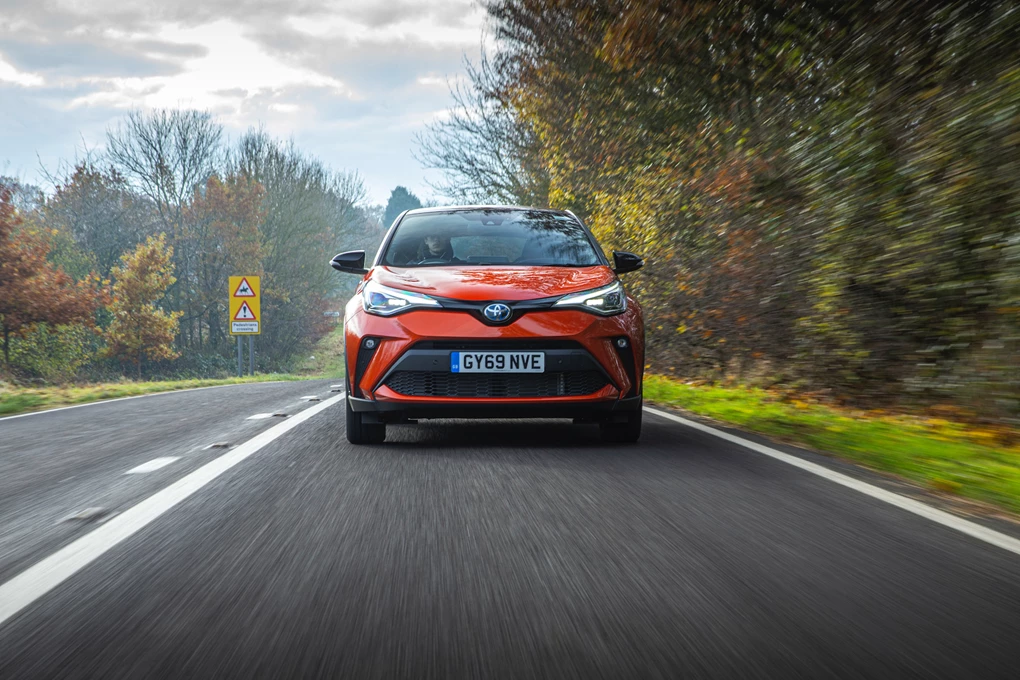
Performance
There are two hybrid setups to choose from on the C-HR – the first using a 1.8-litre petrol motor and the latter a 2.0-litre unit. Each comes equipped with a CVT automatic transmission delivering power to the front wheels.
Starting with the 1.8-litre, this petrol-electric setup produces a total of 120bhp and 142Nm of torque – enabling a 0-60mph time of 10.8 seconds. While performance is a bit uninspiring, it’s the most efficient of the pair – returning up to 58.9mpg, with CO2 emissions of 109g/km.
As for the new 2.0-litre, this has plenty more punch – producing 182bhp and 190Nm of torque thanks to its larger motor. That allows it to reach 0-60mph in just eight seconds, though it’s still quite good when it comes to efficiency, with Toyota saying it will return 53.3mpg, with CO2 emissions of 109g/km.
It’s important to note that the C-HR is a ‘self-charging’ hybrid, therefore meaning it charges itself as it drives along, but that means the hybrid system can only really run just on electricity at slow speeds for a short period of time.

Ride and handling
As a rule, self-charging hybrids often aren’t that inspiring when it comes to driving enjoyment. Thankfully the C-HR completely bucks that trend, as with a keen chassis it’s actually quite good fun on twisty roads.
It’s also impressive around town, with its tight dimensions and smooth hybrid system making this Toyota a very easy car to drive, while a supple ride also makes it a rather good motorway cruiser as well. The only real downside to the driving experience is that rear visibility is poor because of the C-HR’s rakish styling, though a range of sensors and blind spot monitoring improve matters.
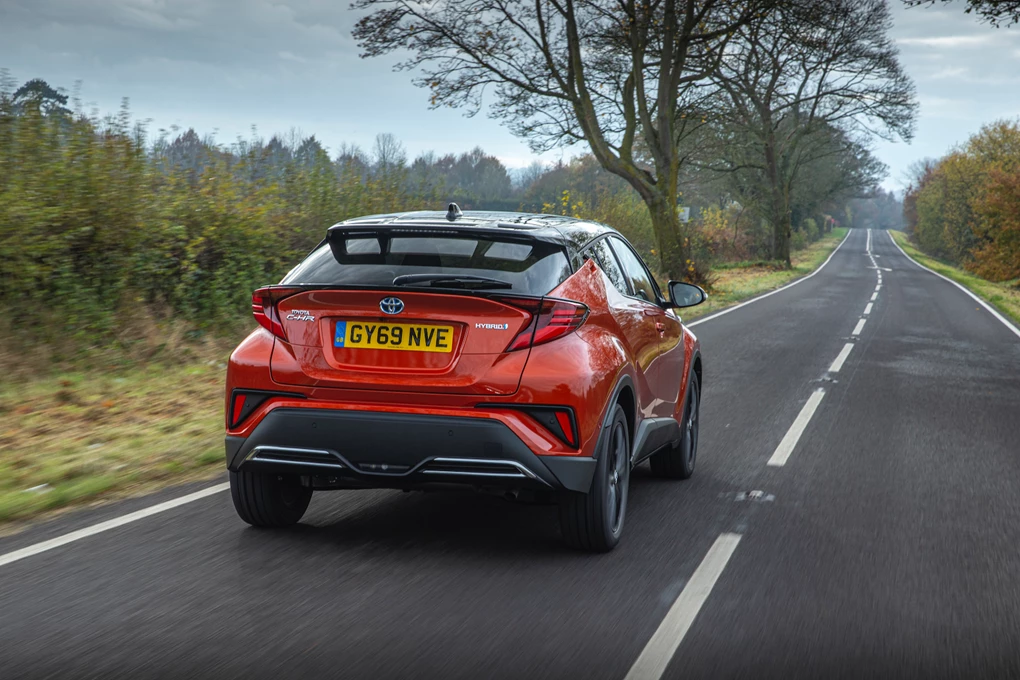
Interior and equipment
Toyotas are known to be built to last and there’s a real sense of sturdiness with the C-HR’s cabin, along with widespread use of soft-touch materials. This latest model also comes with an improved touchscreen system, which now incorporates Apple CarPlay and Android Auto. The system itself isn’t the easiest to use or quickest to react, though, and falls short of systems like those you’d find in the Volkswagen T-Roc or Mazda CX-30.
The unconventional styling also means the C-HR isn't the most practical model in its class. The 377-litre boot is a decent size, but falls short of key alternatives like the Nissan Juke.
Regardless of the C-HR trim you go for, it comes with plenty of equipment. Entry-level Icon models feature 17-inch alloy wheels, LED headlights, a reversing camera and a whole suite of safety kit, including adaptive cruise control. More stylish Design versions bring larger 18-inch alloy wheels and privacy glass, along with satellite navigation and keyless entry.
Up next is Excel, which comes with a heated steering wheel, heated front seats and leather upholstery, meanwhile the Dynamic version features adaptive LED headlights and a bi-tone roof. Sitting at the top of the range is the Orange Edition, which is painted in a cool Scorching Orange paint colour and also comes with a nine-speaker JBL sound system.
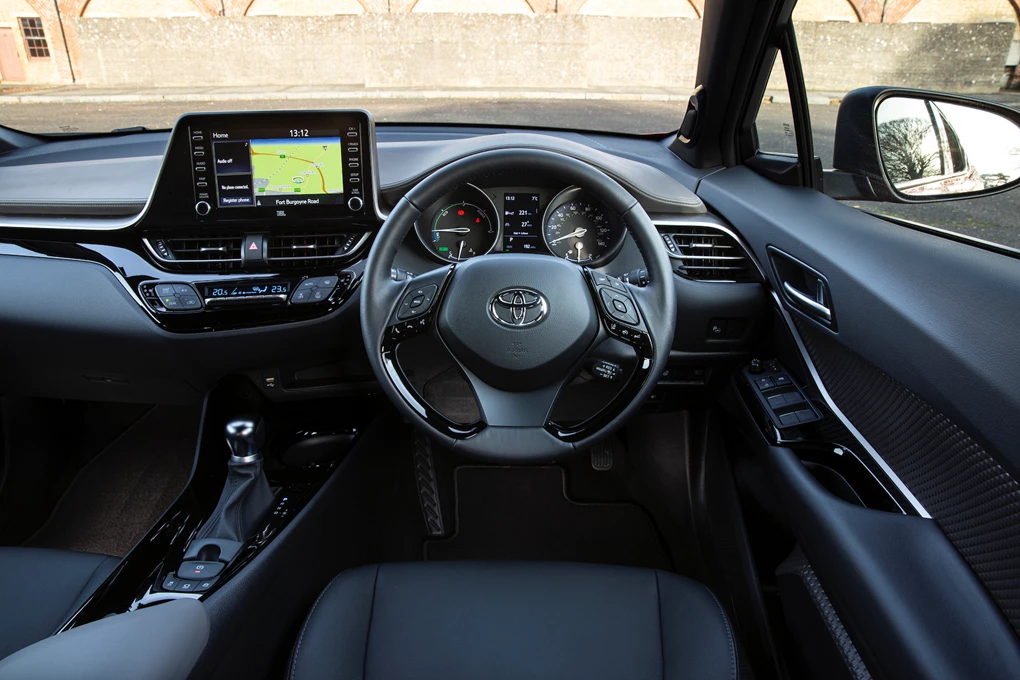
Cost
Hybrid models typically command higher prices and that’s true here, with the C-HR available from £26,245, while if you fancy the 2.0-litre hybrid model this will set you back more than £30,000. On the plus side, strong residual values make it an affordable model to finance or offer reduced depreciation if you’re buying it outright.
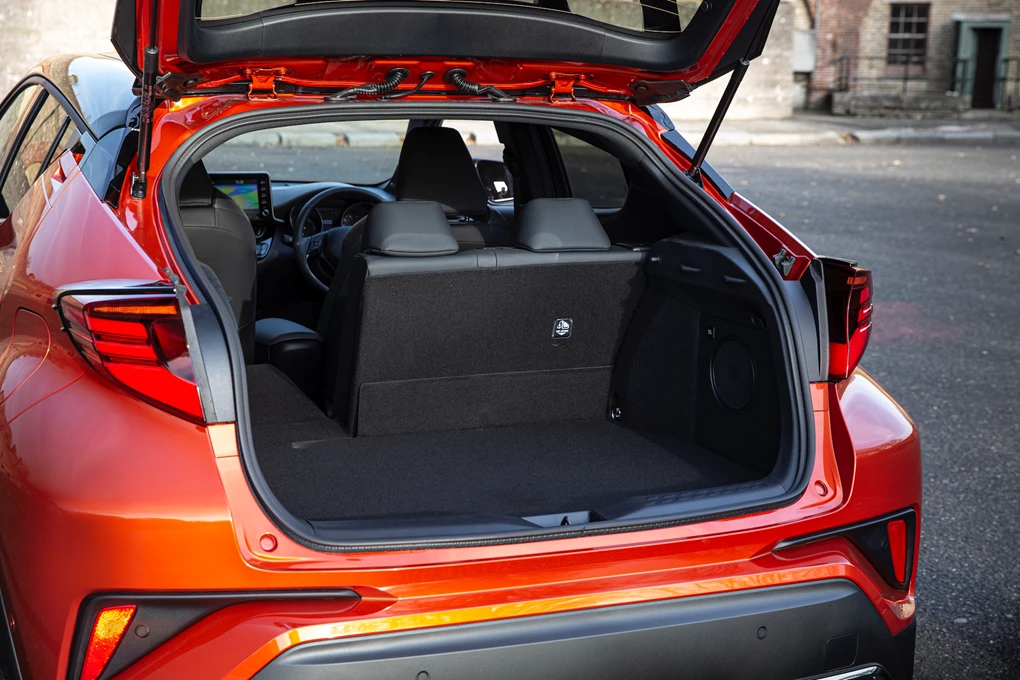
Verdict
The C-HR is a rather interesting crossover option. Toyota clearly wasn’t fussed about making it as roomy and as affordable as possible, so instead it’s made it seriously well-equipped, great to drive and also very efficient.
If you’re wanting maximum practicality, a similarly-priced model like the Skoda Karoq might make more sense, but when it comes to style and driving enjoyment, the C-HR is tough to beat in this class.
Enquire on a new Toyota C-HR

